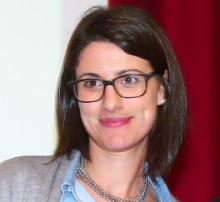
Maria Ines Alvelos, Belgium
PhD student at Center for Diabetes Research, Université Libre de Bruxelles.
My PhD project focus on understanding the role of alternative splicing (AS) in pancreatic β-cell dysfunction and death in type 1 diabetes, and also on identifying key splicing factors and harmful mRNA splice variants that can be modulated using antisense oligonucleotides (AONs). Since antisense-mediated exon skipping using AONs has never been tested in T1D model, we would like to test this approach and to implement it in our disease model. Therefore, the specific aims of this visit to Professor Aartsma-Rus’ Lab at Leiden University Medical Center (LUMC) were: to learn the background on AON design, and to follow and learn the transfection protocol of AONs in muscle cell culture, in order to adapt it for use in pancreatic β-cells upon my return to the lab in Brussels.
From August 29th till September 2nd I have visited the lab of Prof. Aartsma-Rus and I had the opportunity to learn and to be hands-on, on AONs solution preparation, cell transfection, quantification of the transcripts, and on AON design. Using an AON targeting a specific region on exon 23 in the DMD (Dystrophin) gene, immortalized myoblast cells were transfected using Lipofectamine2000 and the efficiency of transfection verified using a FAM labelled AON. We observed around 90% of transfection efficiency. After an overnight period of incubation, RNA extraction was performed using the standard TriPure isolation method, followed by cDNA synthesis. The exon skipping was evaluated using a two-round RT-PCR (a PCR reaction followed by nested-PCR), and the efficiency of skipping assessed by running an agarose gel, and also using Lab-on-a-Chip technology (Agilent 2100 Bioanalyzer). Additionally, together with Prof. Aartsma-Rus I was introduced to AONs design using specific bioinformatics tools, and we have discussed the appropriate experimental design to optimize and examine the effect of AONs in my model.
This week was very fruitful and everything that I learned will definitely contribute to the development of my PhD project. It will be the groundwork for the development of a new approach to circumvent β-cell dysfunction in T1D.
I am very grateful for the opportunity to visit Prof. Aartsma-Rus’ Lab and for their amiability. I can state that was a very productive collaboration.
August 2016
